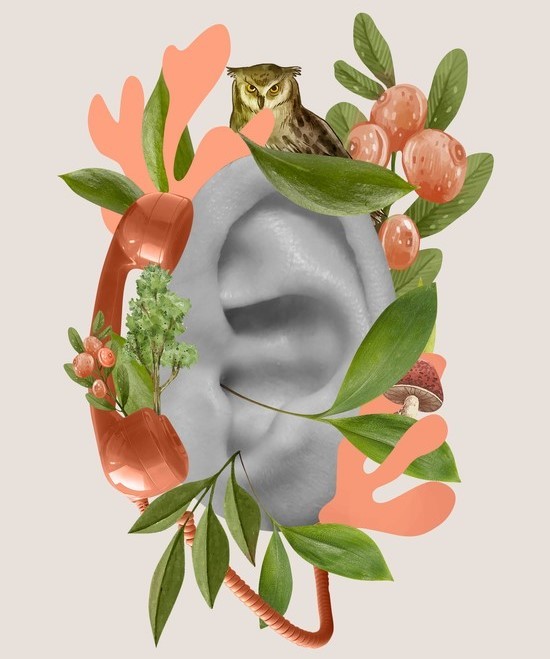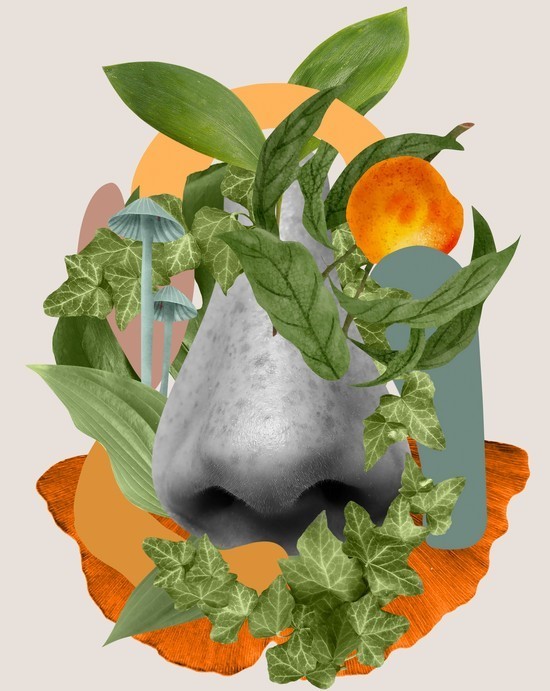Can you taste words?
Have you tried to see the colors of numbers? Do you think Thursday and November
have the same “vibe”? You could simply be using a cognitive action named
intensity matching — or you could have a special type of perception called
synesthesia.
اضافة اعلان
The term
“synesthesia” comes from the
Greek phrase for “to perceive together”. According
to a research article titled “Survival of the Synesthesia Gene: Why Do People
Hear Colors and Taste Words”, synesthesia is “a perceptual experience in which
stimuli presented through one modality will spontaneously evoke sensations in
an unrelated modality” (translation: one of your five senses is suddenly
activated when you are using another one). It occurs when the sensory regions
in the brain experience enhanced communication. Synesthesia is involuntary —
you cannot opt in or out of the condition.
There is no exact
means of predicting how synesthesia might affect someone, as people who have
the condition experience it in various ways. Some can taste the names of their
friends. Imagine if hearing “Aisha”, “Mohammad”, or “Lisa” brought fruity
flavors to your tastebuds, or alternately, a sour or bitter acidic taste. (However,
the type of flavor has nothing with how those with synesthesia perceive or feel
about their friends. Their brains simply connect specific flavors to the
names.) Some synesthetes associate colors with numbers, months, or days. For
example, when planning out your week, Monday might bring a bright yellow to
your vision, or Wednesday a dark green.
It is important
to note that there is no official method of diagnosing synesthesia. However, a
researcher named Dr Richard Cytowic developed guidelines to identify the
condition, explaining that those with synesthesia typically experience the
perceptions involuntarily and project sensations outside the mind.

Usually, the
perception or association is permanent — the same musical note would be
connected to the same color every time. In most cases, the perceptions are also
generic and simple. A simple shape such as a circle or square could flash into
their vision as they catch a whiff of a certain smell, but they are unlikely to
see something more complex, such as a car or flower. Looking back into the
past, the memories of those with synesthesia often feature the secondary
synesthetic perception more clearly than the primary perception.
Numbers, colors, letters, and shapes
An interesting connection exists between synesthesia and other human
characteristics. Synesthetes tend to be interested in the visual arts and
literature, which can enhance their unique sensations. Often, synesthetes are
also diagnosed with
ADHD or autism, and evidence for the concurrence of the two
conditions is becoming stronger as more and more studies are conducted on
synesthesia.
Most synesthetes
also happen to be left-handed, and people who are bilingual are more likely to
experience the phenomenon. A 2017 survey of 11,000 college students found that
children exposed to two languages from early in their childhood age were more
likely to have synesthesia than those who were not.
Interestingly
enough, synesthetes, especially when they are children, might not realize that
the unique sensory connections they experience are out of the ordinary.
According to synesthesiatest.org, “a child who experiences synesthesia symptoms
will most likely not recognize the condition, but those around them will be
able to suspect it if their general expressions imply out of the ordinary
sensory experiences.” An adult, on the other hand, may be more likely to
realize that most people do not taste words or see sounds.

According to
scholarly research, there are at least 80 types of synesthesia. Chromesthesia,
one well-known type, refers to seeing sounds in colors. People with
grapheme-color synesthesia, on the other hand, see letters and numbers as
colors. Other types include auditory-tactile synesthesia, when sound involves a
touching sensation; mirror touch, which gives you the sensation of touch when
you see someone, for example, shake hands with someone else; calendar
synesthesia, when you associate colors with the days of the week and shapes
with the months of a year; spatial sequence synesthesia, in which numbers or
the alphabet are spatially arranged in your mind, and many more.
Causes and effects
Jordan News interviewed
Sumayya Ramiz, a Jordanian university student of social psychology and cultural
sociology who has conducted research on synesthesia with other scholars.
“The odd part
about synesthesia is that it is not diagnosable, which is why you might even
have difficulty finding psychologists who know about it,” she explained.
Most cases of
synesthesia are genetic, Ramiz noted. “If your parents had it, you have at
least a 40 percent chance of having it too.”
“If you meet a
synesthete, expect their parents to have synesthesia as well,” she said.
However, genes do
not account for all cases. “While genetic synesthesia is seemingly the focus of
current studies, synesthesia may have different causes,” she said.
Mental disorders
represent the second most common cause of synesthesia, including borderline
personality disorder, bipolar disorders, schizophrenia, and other mental
illnesses. Overloads or deprivations to a person’s sensory system are also
likely to produce synesthetic experiences, she explained.
“Of course, drugs
could also be a factor for synesthetic experiences, but that is almost
expected,” Ramiz added.
Layla Qais, a
synesthete living in Jordan, shared her experience with chromesthesia, in which
she sees the sound of people’s names through color.
“I also see songs
as colors and shapes,” she said. “So usually, when there are songs that are
very visual for me, I like to paint them with the colors and shapes I see.”
“It’s like an
amalgamation of senses,” she said, reflecting on how her synesthesia feels.
“When I was a kid, I thought everyone felt this way, but apparently not.”
Synesthesia, as a
whole, is not a serious, deadly, or mortal condition, and may have no
significant effect on those who have it. However, awareness is important, as it
may help many synesthetes discover their unique sensory connections.
“It’s an odd, but quite
interesting phenomenon,” said Ramiz. “At some points, it feels unreal.”
Read more Odd and Bizarre
Jordan News



